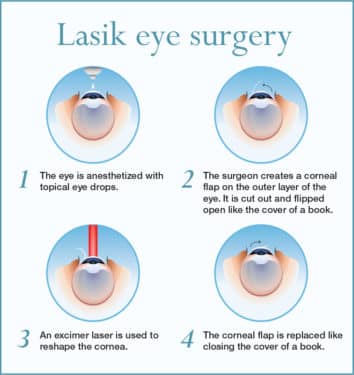Start A Fascinating Journey Through The Evolution Of Cataract Surgical Procedure Methods, From Old Roots To Advanced Developments That Are Improving The Future Of Eye Treatment
Start A Fascinating Journey Through The Evolution Of Cataract Surgical Procedure Methods, From Old Roots To Advanced Developments That Are Improving The Future Of Eye Treatment
Blog Article
Content Writer-Brask Meyers
As you check out the evolution of sophisticated cataract surgery strategies, you'll witness a journey marked by ingenuity and accuracy. From https://howmuchdoesbladelesslasik17394.blog2news.com/29817993/conflicted-about-whether-to-choose-lasik-or-prk-for-vision-adjustment-find-out-about-the-major-differences-to-empower-yourself-in-deciding-that-accommodates-your-individual-preferences that paved the way for modern innovations to advanced modern technologies that are revolutionizing the field, the extensive introduction of cataract surgical procedure methods is a testament to human development and commitment to improving patient end results. The elaborate interplay in between historic strategies and futuristic advancements creates a fascinating story that clarifies the advancement of one of the most usual surgical procedures worldwide.
Historical Techniques and Advancements
Explore how early surgeons reinvented cataract treatment by using ingenious methods and tools. In the past, cataract surgery was a dangerous and agonizing procedure. Nevertheless, old Indian physicians were amongst the very first to attempt medical interventions for cataracts, using a method called 'couching' where a sharp instrument was made use of to push the cataract back into the eye. This approach, though crude by today's criteria, laid the groundwork for future improvements in cataract surgical procedure.
As time progressed, Arab medical professionals made substantial contributions by establishing specialized needles for cataract extraction. These needles were used to puncture the cataract and afterwards extract it from the eye, noting a substantial improvement in medical accuracy.
Later, in the 18th century, the French cosmetic surgeon Jacques Daviel spearheaded the method of extracapsular cataract removal, where the whole lens was eliminated intact through a larger laceration. This noted a major improvement in cataract surgical treatment methods, paving the way for the modern treatments we use today.
Modern Surgical Approaches
Early strategies in cataract surgery have progressed significantly, leading to the growth of modern-day medical approaches that focus on accuracy and improved person outcomes. Modern cataract surgery now often entails a treatment called phacoemulsification, where an ultrasonic device breaks up the cataract for elimination through a small cut. This strategy allows for quicker healing and lowers the risk of complications compared to older methods.
Furthermore, making use of advanced intraocular lenses (IOLs) has changed cataract surgical procedure results. These lenses can fix not just the cataract yet also various other refractive errors like astigmatism, decreasing the requirement for glasses post-surgery.
Surgeons today likewise have access to sophisticated imaging modern technologies that aid in specific preoperative preparation and intraoperative decision-making. cataract surgery procedure video (OCT) and other imaging methods give detailed photos of the eye's structures, permitting an extra tailored strategy to each person's surgery. With these improvements, modern cataract surgical procedure techniques remain to boost, supplying individuals safer treatments and far better aesthetic end results.
Arising Technologies in Cataract Surgical Treatment
With improvements in technology reinventing the field, cataract surgery is observing the integration of ingenious techniques for improved person results. Arising modern technologies in cataract surgical procedure are improving the landscape of sensory treatments. One such advancement is femtosecond laser innovation, which permits accurate corneal lacerations, capsulotomies, and lens fragmentation, causing enhanced medical precision and end results.
Furthermore, intraoperative aberrometry is obtaining appeal, making it possible for real-time dimensions of refractive errors during surgery to improve intraocular lens power computations and lower postoperative refractive surprises.
In addition, using advanced imaging technologies like optical comprehensibility tomography (OCT) and intraoperative wavefront aberrometry help specialists in accurate surgical preparation and implementation. These tools give detailed anatomical details and help tailor surgical methods for each patient's special eye characteristics.
Additionally, advancements in artificial intelligence are being explored to help in preoperative preparation, intraoperative decision-making, and postoperative treatment, potentially optimizing surgical results and client contentment. Welcoming these emerging modern technologies in cataract surgical procedure holds guarantee for more enhancing client outcomes and making sure the continued development of ocular medical strategies.
Conclusion
As you trip via the history of cataract surgery, you witness the transformation from ancient methods to cutting-edge innovations. Like a phoenix az increasing from the ashes, cataract surgery has actually advanced into a sign of hope and development.
Equally as a caterpillar arises from its cocoon as a gorgeous butterfly, cataract surgery has blossomed into a polished art form, offering individuals clearer vision and a brighter future.
The evolution proceeds, shining a light on countless opportunities.
